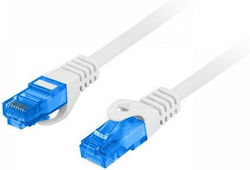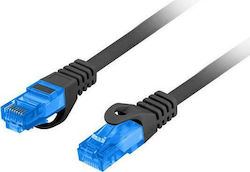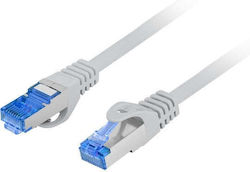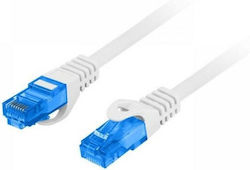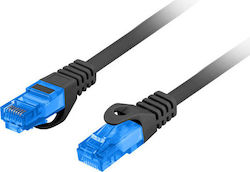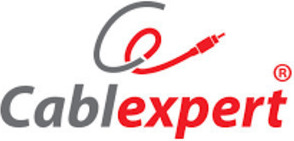Filters
ClearRecommended
- Cat.5: Supports speeds up to 100 Mbps and is ideal for older home and small networks.
- Cat.5e: Improved version of Cat.5, supports speeds up to 1 Gbps and reduces interference (crosstalk).
- Cat.6: Supports speeds up to 10 Gbps over shorter distances (up to 55 meters), with better shielding to avoid interference.
- Cat.6a: Supports speeds of 10 Gbps over longer distances (up to 100 meters) and has improved performance against electromagnetic interference.
- Cat.6e: It is not an official standard, but it usually refers to high-quality cables with better performance than Cat.6.
- Cat.7: Supports speeds up to 10 Gbps with enhanced shielding, suitable for industrial and professional uses.
- Cat.7a: Upgraded version of Cat.7, can support speeds up to 40 Gbps over short distances.
- Cat.8.1: Supports speeds up to 40 Gbps, mainly for data centers and professional applications, with excellent shielding for high performance over short distances (up to 30 meters).
- S/FTP: This type of cable has shielding both around each pair of wires and around the entire cable. It offers very high protection against interference (EMI/RFI) and is ideal for environments with high electromagnetic noise.
- Optical Fiber: Optical fiber transmits data through light rather than electrical signals, offering much higher speeds and distances compared to metallic cables. It is resistant to electromagnetic interference.
- U/UTP: U/UTP has no shielding at any point. It is widely used in local area networks (LAN) due to its low cost and ease of installation, but it is more susceptible to interference.
- U/FTP (STP): Here, the cable pairs are shielded with aluminum, but the overall cable does not have additional shielding. It offers protection against interference per cable pair, improving performance in environments with moderate interference.
- F/UTP: It has a general shielding around the outer part of the cable (usually made of foil), but the wire pairs are not shielded. It is often used in environments with a moderate level of interference.
- SF/UTP: This type features both foil and braid around the overall cable, but the wire pairs remain unshielded. It offers even greater protection against electromagnetic interference.
- SF/FTP: Each pair of cables is shielded, and the entire cable is also shielded with foil and braid. This type offers maximum protection against interference and is ideal for environments with very high noise levels.
- S/UTP: The cable has an external shield (mesh) around the entire set of wire pairs, but the pairs themselves do not have additional shielding. It is a good choice for moderate levels of interference.
- Direct Attach Copper: It is mainly used for high-speed connections over short distances between network devices, such as switches and routers. It is an economical cable that does not require additional transceivers.
- F/FTP: Each pair of wires is shielded with foil, and there is also additional shielding around the entire cable, providing excellent protection against interference.
- FC-FC 0
- FC-PC 0
- FC-UPC 0
- LC-FC 0
- LC-LC 0
- LC-SC 0
- LC-ST 0
- LC/APC-LC/APC 2
- LC/APC-LC/UPC 3
- LC/UPC-LC/UPC 12
- LC/UPC-SC/APC 2
- LC/UPC-SC/UPC 7
- LC/UPC-ST/UPC 1
- SC-APC 0
- SC-PC 0
- SC-SC 0
- SC-UPC 0
- SC/APC-LC/APC 2
- SC/APC-LC/PC 0
- SC/APC-LC/UPC 0
- SC/APC-SC/APC 32
- SC/APC-SC/UPC 4
- SC/UPC-LC/UPC 5
- SC/UPC-SC/UPC 15
- SC/UPC-ST/UPC 0
- SFP+ 0
- ST-SC 0
- ST-ST 0
- ST-UPC 0
- Shipped from Skroutz Hub: Products available for shipping directly via our warehouse, Skroutz Hub.
- Offers: Products with a significant price drop.



























